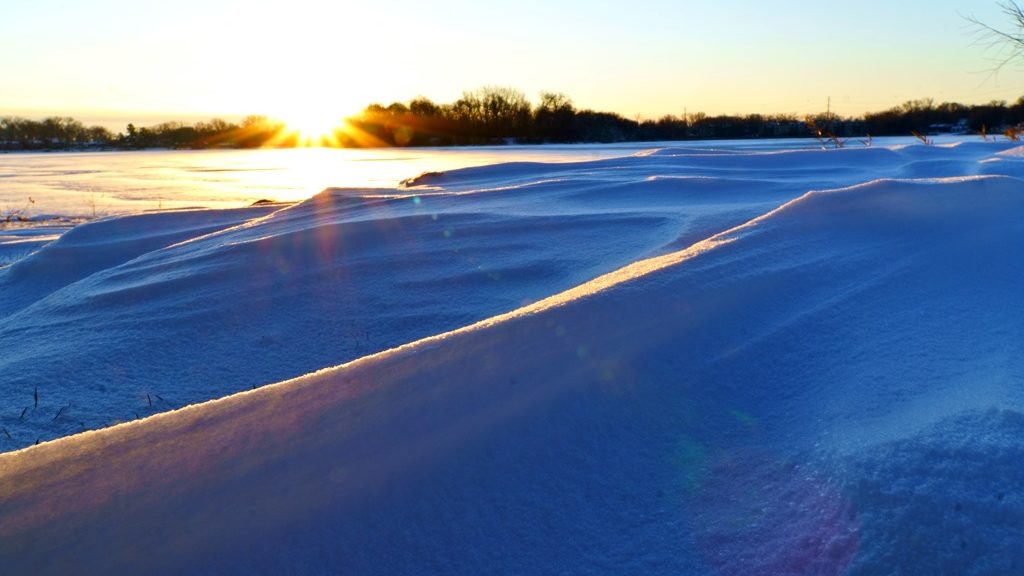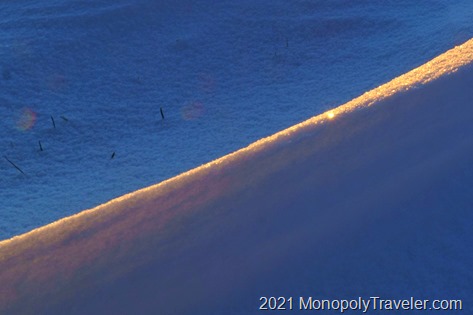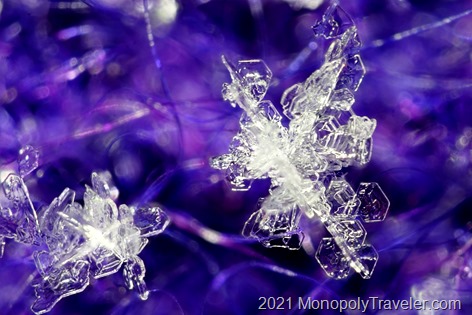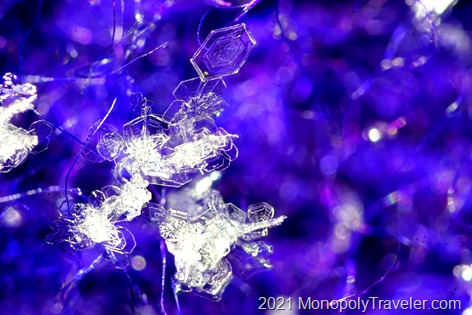Recently we had several inches of snow in the forecast and I wanted to get some great photos of it. The next morning called for cold and clear skies so I headed out to a nearby park to capture images of the fresh snow before the days sunlight began to melt it away. The sky was less interesting than I’d hoped with clouds covering the horizon and clear skies above meaning no color in the clouds or sun at the horizon. Eventually the sun rose above the clouds to shower everything in warm, bright light. What I did find were patterns in snow from winds blowing strongly during the snowfall. It created some dramatic drifts carefully carved with each flake driven into the ground by forceful winds. Why does the snow remain in one streak while the rest of it was blown away?
What fascinates me is taking a closer look at these drifts and seeing the patterns and layers. Imagining what was happening while they’re being created. In this case, how did the snow go together in each layer? What I also find amazing is the same forces that create these drifts are also factors in how stone and sand are naturally carved – especially sandstone in the desert Southwest of the United States. Only snow drifts happen much faster so we can witness it in a matter of hours.
As the snow was falling, I took some time to capture a few of these and photograph them. It was a challenge for several reasons – the temperatures were near freezing so they melted quickly once under the camera, they were small as far as snowflakes go, and the crystals formed in all directions which is unusual.
In the picture above the blurry bright area on the lower right is a toothpick. This gives you something to compare how small these individual snow flakes were. Knowing how small these were makes me question what impact that had on the drifts created? If these ice crystals had been bigger, as they often are, the drifts would have formed differently with different patterns and shapes. In the top pictures there’s a very narrow drift. I’m certain it would not have been possible with larger snowflakes as they can get picked up easier by the wind, whereas these smaller ones are probably more aerodynamic allowing them to stay in place. What protected that little strip of snow? I didn’t look at that at the time of photographing the imagine so I’m not sure.
During the snowfall, these were the types of flakes falling. With each crystal appearing to be in a random direction, there were lots of interesting shapes to look at as they began to melt. One of the pieces that amazed me was how thick each of these crystals were compared to their overall size which is easier to see with larger images. One of the questions I had was did each of these snowflakes form this way or were there many small crystals that collided together to form these? It’s intriguing to think about and try to solve this question in an effort to learn what conditions are needed for such a ice crystal to be made.






